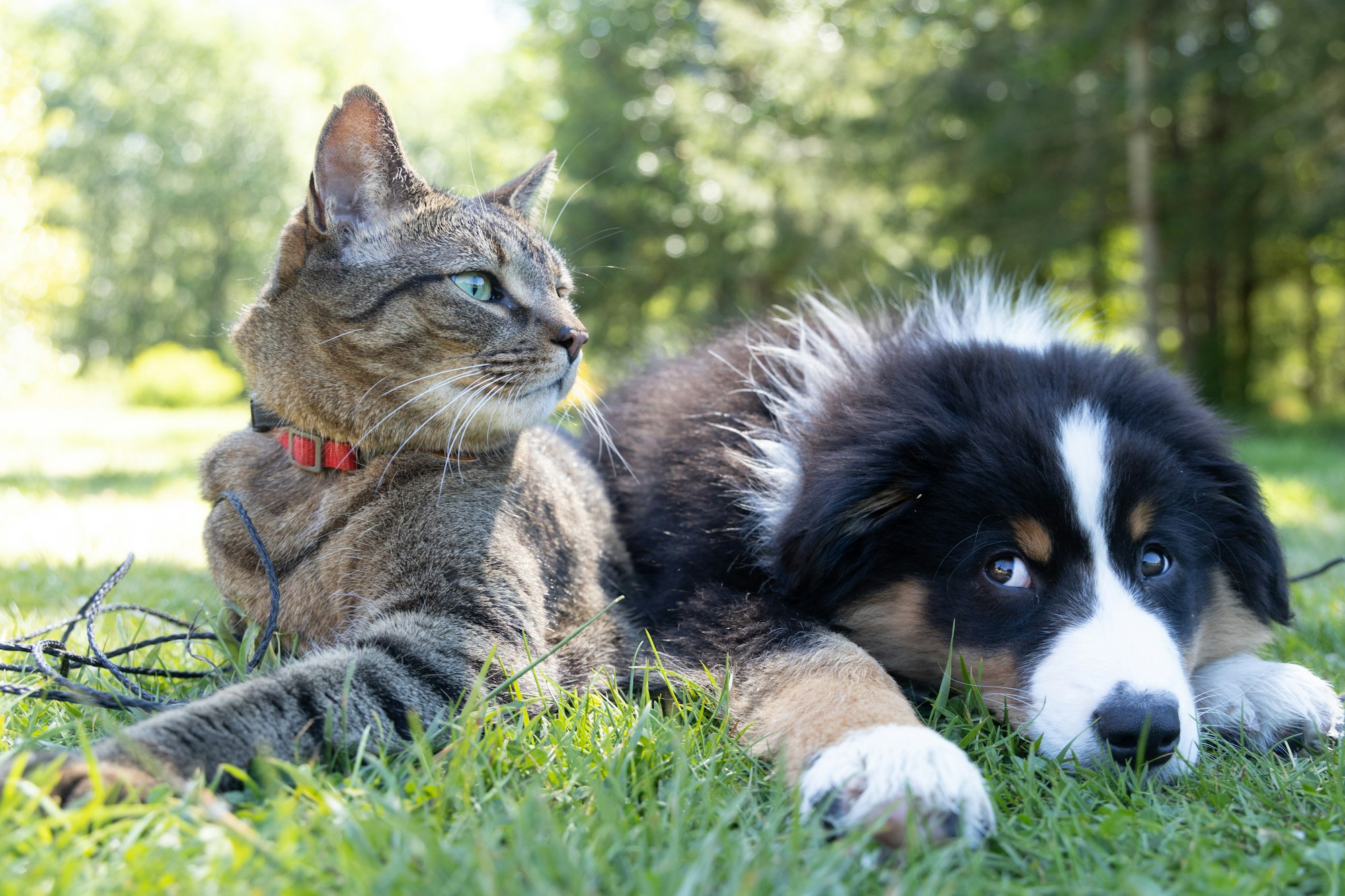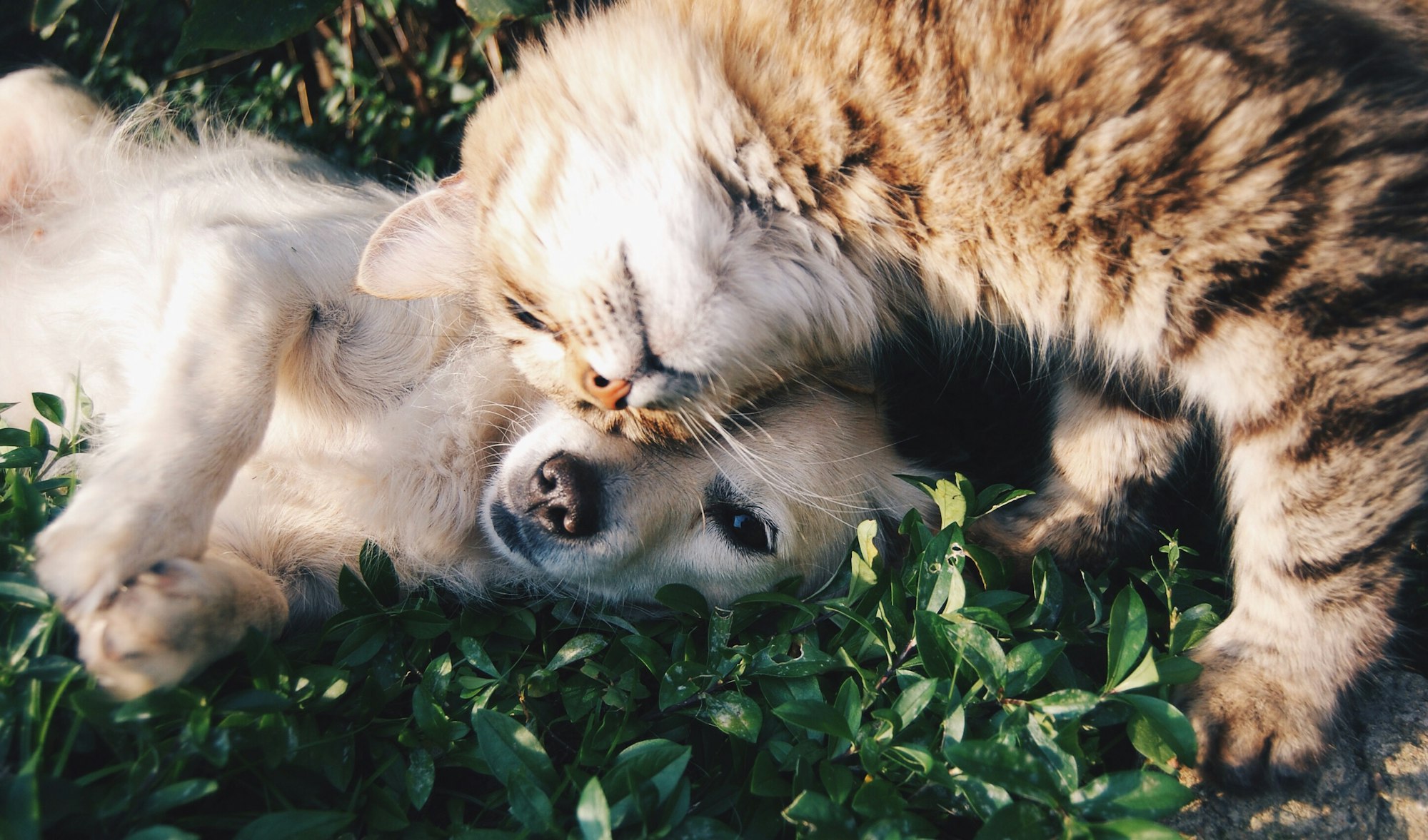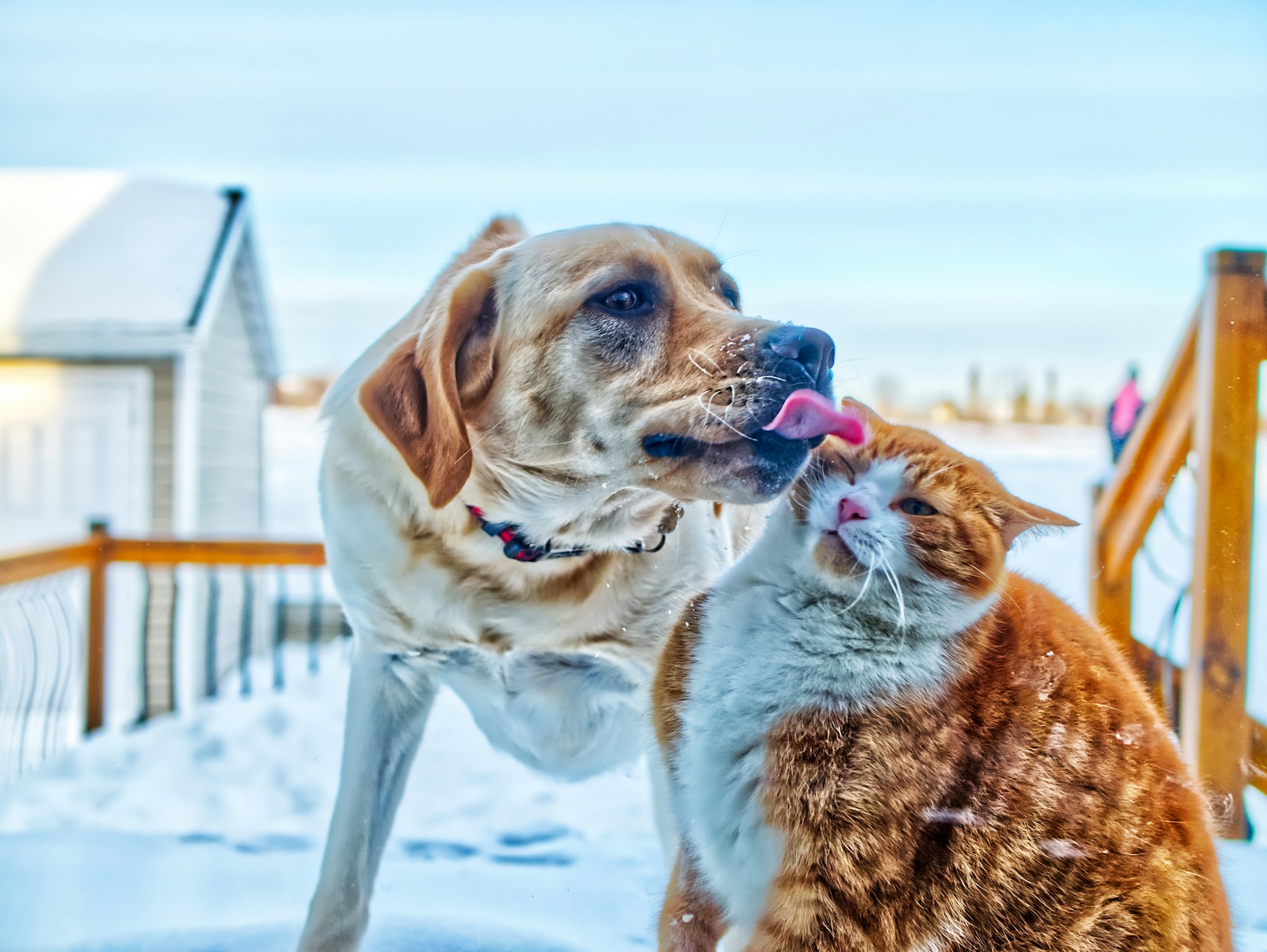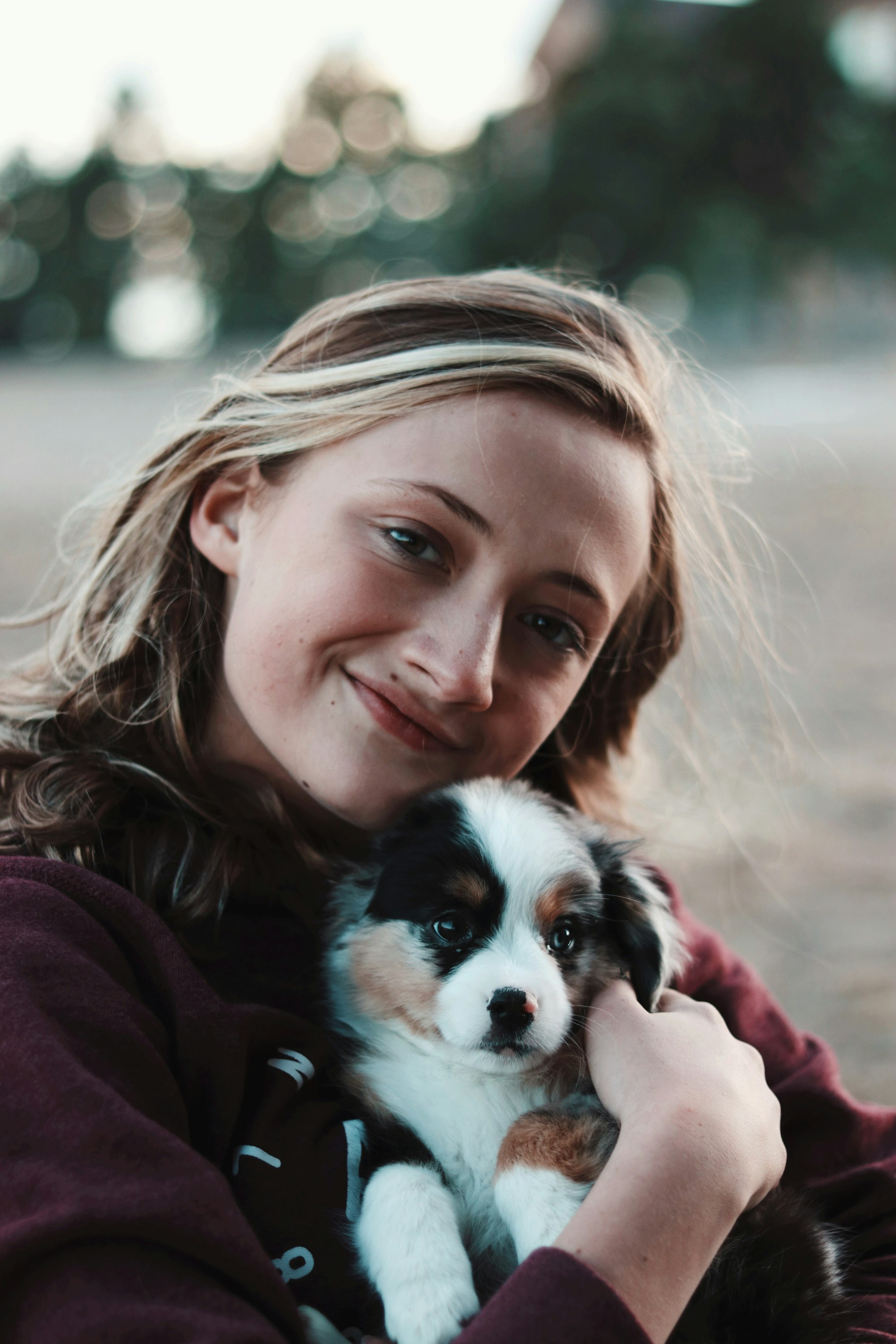Navigating the intricate dynamics of introducing a dog to a cat can be a daunting task for pet owners. But fear not! With the right knowledge and a sprinkle of patience, achieving a harmonious household with both cats and dogs is entirely feasible. This guide will delve deep into the steps and precautions to ensure a smooth introduction between your feline and canine companions.

Understanding the Essence of a Structured Introduction
Before jumping into the actual steps, let's shed light on why structured introductions are paramount. Dogs and cats, by nature, possess different temperaments, communication styles, and territorial instincts. A careful, methodical approach ensures the safety of both animals, reduces potential stress, and paves the way for a lasting bond between the two.
Step 1: Laying the Groundwork
Designated Spaces
Prior to their first meeting, ensure both pets have distinct areas in the house. These areas, equipped with their respective comforts like toys, food, and, for the cat, a litter box, act as personal havens. It’s where they can relax and find solace if things get a tad overwhelming.
The Art of Scent Swapping
Before any visual contact, start with scent introductions. Exchange toys, blankets, or even brushes between the two, allowing each to familiarize themselves with the other's scent. This non-confrontational approach eases the tension for their eventual face-to-face encounter.
Step 2: The Initial Visual Contact
A Barrier-aided Introduction
Utilize a baby gate, a mesh screen, or a slightly opened door to facilitate their first visual interaction. This barrier method guarantees safety while satiating their innate curiosity about the other.
Decoding Their Body Language
It's crucial to be observant during this phase. Signs like hissing, growling, or excessive barking indicate distress or discomfort. Conversely, if they seem relatively calm or indifferent, it's a green signal to progress to the subsequent phase.
Step 3: The Neutral Ground Meeting
Picking the Right Spot
Select an area in the house that neither pet considers their territory, perhaps a seldom-used room or hallway. This neutral territory minimizes territorial defensiveness.
Gradual and Watchful Interactions
For the first few interactions, keep them brief and always under supervision. As they grow accustomed to each other, you can incrementally extend their interaction time.
Step 4: Post-introduction Observations
Even after the formal introductions, it's essential to monitor their behaviors. If either pet exhibits signs of undue stress, aggression, or withdrawal, it might be beneficial to take a step back or seek expert advice.
Pro Tips for Fostering a Positive Relationship
Patience is Key
Relationship-building is a marathon, not a sprint. Allow the pets to dictate the pace, ensuring they're comfortable at every stage.
Positive Reinforcement
Whenever they display amicable behavior towards each other, reward them. This not only reinforces positive behavior but also helps them associate pleasant experiences with each other's presence.
Equal Affection Distribution
While it's tempting to dote on one pet, especially if they're the newer addition, strive to distribute your affection and attention equitably. This minimizes potential jealousy and ensures both feel valued.

Step 5: Regularizing Shared Activities
Co-play Sessions
Once both pets seem more at ease with each other, consider introducing shared play sessions with toys suitable for both. This can foster a sense of camaraderie and reduce any residual tension between them.
Joint Meal Times
Feeding them at the same time, albeit at a distance, can help establish a routine where they associate mealtime with each other’s presence. Over time, you can gradually move their feeding stations closer, promoting a more communal dining experience.
Step 6: Addressing Setbacks
Re-introductions
Sometimes, despite our best efforts, the initial introductions might not go as planned. In such cases, don't be disheartened. Take a step back, reassess, and consider a slower, more gradual re-introduction process.
Seeking Professional Help
If the pets continue to show aggression or fear, it might be beneficial to consult with a pet behaviorist or veterinarian. They can provide tailored strategies and insights specific to your pets' temperaments.
Creating a Harmonious Living Space
Respect Individual Needs
While the goal is to have both pets coexist peacefully, it's vital to acknowledge and respect their individual needs. Some cats prefer high perches to observe their surroundings, while some dogs might need a specific resting spot. Catering to these unique preferences can help in reducing potential friction points.
Regular Health Check-ups
Ensuring that both pets are in optimal health can prevent irritability or aggression stemming from underlying health issues. Regular check-ups with a veterinarian can help in early detection and treatment.
Nurturing the Growing Bond
Celebrate Small Wins
Every positive interaction, no matter how trivial, is a step towards building trust. Whether it's a shared nap on the couch or a playful chase around the house, cherish these moments as milestones in their growing relationship.
Capturing Memories
Documenting their journey can be both fun and enlightening. Photos and videos of their interactions can serve as a testament to their evolving bond. Plus, they make for adorable memories to look back on!

Troubleshooting Common Challenges
Jealousy and Possessiveness
It's not uncommon for pets, much like humans, to feel a twinge of jealousy, especially when they perceive a threat to their established routines or affections.
Solutions:
- Dedicated Alone Time: Ensure that each pet gets individual attention and one-on-one playtime.
- Establish Boundaries: If one pet seems to be hogging a particular space or toy, intervene gently and set clear boundaries.
Communication Barriers
Cats and dogs have different communication styles. While a dog might wag its tail in excitement, a cat might interpret it as a sign of aggression.
Solutions:
- Educate Yourself: Familiarize yourself with basic feline and canine body language. This knowledge can help in preempting and addressing potential conflicts.
- Intervention: If you notice one pet misinterpreting the other's signals, a gentle intervention can prevent escalation.
Safety First
Supervised Interactions
Even after successful initial introductions, always supervise their interactions until you're confident about their relationship. This ensures that any sudden aggressive outbursts can be promptly addressed.
Emergency Separation
Have a plan in place to separate the two quickly if things get heated. This can be a separate room, a pet carrier, or even a distraction like a toy or treat.
Embracing Their Unique Personalities
Accepting Differences
Every pet, like humans, has its quirks and personality traits. Embrace these differences and avoid forcing interactions. Some pairs might become inseparable buddies, while others might maintain a respectful distance. Both outcomes are okay as long as there's peace and mutual respect.
Adapting to Their Pace
Some cats and dogs might hit it off instantly, while others might take weeks or even months to adjust. The key is to be patient and adapt to their pace, ensuring they're always comfortable and stress-free.

Beyond the Basics: Advanced Strategies for Harmony
Training Sessions
Both dogs and cats can benefit from structured training sessions that focus on coexistence. Basic commands like 'stay', 'sit', and 'leave it' for dogs can be invaluable during their interactions with cats. Similarly, teaching cats to respond to commands like 'come' can help in managing their movements during crucial introduction phases.
Enrichment Activities
Engage both pets in activities that stimulate their minds and bodies. Interactive puzzle toys feeders, and agility courses can provide the necessary diversion, reducing chances of conflicts arising from boredom.
Building Trust Over Time
Consistent Routines
Pets thrive on consistency. Maintaining regular feeding, play, and sleep schedules can reduce anxiety and make the integration process smoother.
Night-time Interactions
Most cats are nocturnal, and their increased activity during the night can be unsettling for dogs. Consider supervised interactions during these hours to ensure that the dog doesn't misinterpret the cat's playful or curious behavior as aggression.
The Power of Positive Reinforcement
Treat-Based Rewards
Use treats to reward both pets when they display desired behaviors. This not only encourages positive interactions but also helps in associating good experiences with each other's presence.
Vocal Praises
A simple "good boy/girl" can go a long way in reinforcing desired behavior. Pets often pick up on their owner's tone, and a happy, encouraging voice can make them feel at ease.
The Role of External Factors
External Sounds and Stimuli
Be wary of external factors like loud noises from fireworks or thunderstorms, which can heighten anxiety. An anxious pet is more likely to react aggressively, so ensure they have a safe space to retreat during such times.
Introducing Other Pets
If you plan to introduce more pets into the household, remember to repeat the structured introduction process for each new member. The dynamics can shift with every new addition, and it's essential to be prepared.
Reflecting on the Journey
Take a moment every few weeks to assess the progress of their relationship. Celebrate the improvements and strategize on areas that need attention.
Join online forums or local pet groups where you can share experiences, seek advice, and learn from others who've walked the same path. The collective wisdom of fellow pet owners can be an invaluable resource.

Understanding Each Species' Needs
The Canine Perspective
Dogs, being pack animals, often look for hierarchy and structure. Understanding this can help in ensuring that the dog feels secure in its position in the household.
Exercise and Stimulation
Regular walks, play sessions, and training can help keep a dog mentally and physically stimulated, reducing the potential for disruptive behavior around the cat.
Socialization
If your dog hasn't been around cats before, consider exposing them to other calm and cat-friendly dogs. This can help them understand appropriate behavior around smaller animals.
The Feline Viewpoint
Cats are territorial creatures and value their personal space. Recognizing this can play a significant role in making the introduction smoother.
Vertical Spaces
Cats love to climb and perch on high surfaces. Providing cat trees or shelves can give the cat its own space, away from the dog, and can reduce territorial disputes.
Safe Zones
Ensure that the cat has unrestricted access to its litter box and feeding area. Dogs can sometimes be curious about cat food or litter, so placing them in a dog-proof area can prevent unwanted confrontations.
Continuous Learning and Adaptation
Stay Updated with Research
Animal behavior research is an ever-evolving field. Keep yourself updated with the latest studies and findings related to multi-pet households. This knowledge can offer fresh insights and techniques for managing your pets.
Periodic Vet Check-ins
Regular health check-ups are essential, but periodic behavioral assessments can also be beneficial. Vets can provide insights into any behavioral changes and offer solutions.
Celebrating Milestones
Documenting Growth
Consider maintaining a journal or digital log capturing their interactions. Over time, revisiting these entries can offer a heartwarming glimpse into their evolving relationship.
Sharing Stories
Sharing your experiences on social media or pet community platforms can not only document your journey but also inspire and guide others on a similar path.
Preparing for the Long Run
As pets age, their tolerance levels, health, and energy can change. Be prepared to adapt the environment and interactions to cater to their changing needs.
Consider the future and make provisions for your pets in case of unforeseen circumstances. This includes ensuring that they can continue to live together harmoniously under the care of a guardian or family member.
Understanding Each Species' Needs
The Canine Perspective
Dogs, being pack animals, often look for hierarchy and structure. Understanding this can help in ensuring that the dog feels secure in its position in the household.
Exercise and Stimulation with Fi Dog Collars
Regular walks and play sessions are crucial for a dog's well-being. The Fi Dog Collar, with its built-in GPS and activity tracker, allows owners to monitor their dog's daily exercise levels, ensuring they get the right amount of physical activity. Plus, with its geofencing feature, you can create safe zones for your dog, reducing worries about them wandering too close to the cat's designated spaces.
Socialization and Safety
If your dog hasn't been around cats before, it's essential to keep tabs on their whereabouts. The Fi Dog Collar offers real-time tracking, ensuring that you always know where your dog is, especially during initial cat introductions.
The Feline Viewpoint
Cats are territorial creatures and value their personal space. Recognizing this can play a significant role in making the introduction smoother.
Vertical Spaces and Monitoring
While cats love their high perches, sometimes they might venture to ground level, especially when curious about a new dog. Using the Fi Dog Collar's tracking data, you can gauge when your dog is most active and ensure the cat has its peace during those times.
Safe Zones Away from Curious Canines
Cats need unrestricted access to their essentials. While the Fi Dog Collar is designed for dogs, its tracking insights can help you determine which areas your dog frequents most, allowing you to strategically place cat amenities in quieter spots.

Conclusion:
Introducing a dog to a cat is a process that requires patience, preparation, and a keen understanding of the unique personalities and behaviors of both animals. While it might seem challenging at first, following a structured and gradual approach can significantly increase the chances of fostering a peaceful coexistence, if not a budding friendship. Remember, every dog and cat is an individual, and their reactions can vary.
It's essential to always prioritize their safety and comfort, ensuring that their first encounters are positive and stress-free. Over time, with consistent guidance and supervision, many dogs and cats can learn to live together harmoniously. Whether they become the best of friends or simply respectful roommates, the effort you put into their introduction will pave the way for a peaceful household.
Frequently Asked Questions (FAQs)
- How long does it typically take for a dog and cat to get along?
- Every dog and cat is different, so the adjustment period can vary. For some, it might be a matter of days, while for others, it could take weeks or even months. Patience is key.
- What signs should I look for to know if the introduction is going well?
- Positive signs include the animals being calm in each other's presence, showing curiosity without aggression, and engaging in playful behavior.
- What should I do if my dog or cat shows signs of aggression during the introduction?
- If either animal displays aggressive behavior, it's crucial to separate them immediately and give them a cool-down period. Reintroduce them gradually, ensuring their safety and comfort at all times.
- Can I leave my dog and cat alone together after the first introduction?
- It's recommended to supervise their interactions until you're confident that they can coexist without any issues. Only leave them unsupervised once they've consistently shown positive behavior towards each other over a prolonged period.
- Does the breed of the dog matter when introducing it to a cat?
- While some breeds have a higher prey drive or are more territorial, the individual dog's temperament is more indicative of how they might react. However, it's always good to be aware of breed tendencies.
- My cat has never seen a dog before, and vice versa. Will this make the introduction more difficult?
- It might mean that both animals are more curious or wary initially. However, with a slow and steady introduction, they can still adapt to each other's presence.
- Should I get professional help if the introduction isn't going well?
- If you're facing persistent challenges or aggressive behaviors, it might be beneficial to consult with a pet behaviorist or trainer who can provide specialized guidance.
- What if one of the animals has a history of trauma or abuse?
- Animals with traumatic backgrounds might require a more extended and gentle introduction process. Ensure you're sensitive to their needs and consider seeking professional advice.
- How can I ensure the environment is safe for both animals during the introduction?
- Remove any potential hazards, provide separate spaces for each animal, and ensure they have escape routes. Also, keep tools on hand like toys to distract them or a blanket to throw in case of a sudden skirmish.
- Do age and size differences between the dog and cat matter during the introduction?
- While age and size can play a role in how the animals interact, the individual personalities and temperaments of the animals are more significant factors. Always monitor interactions, especially if there's a considerable size difference, to ensure the safety of both pets.

